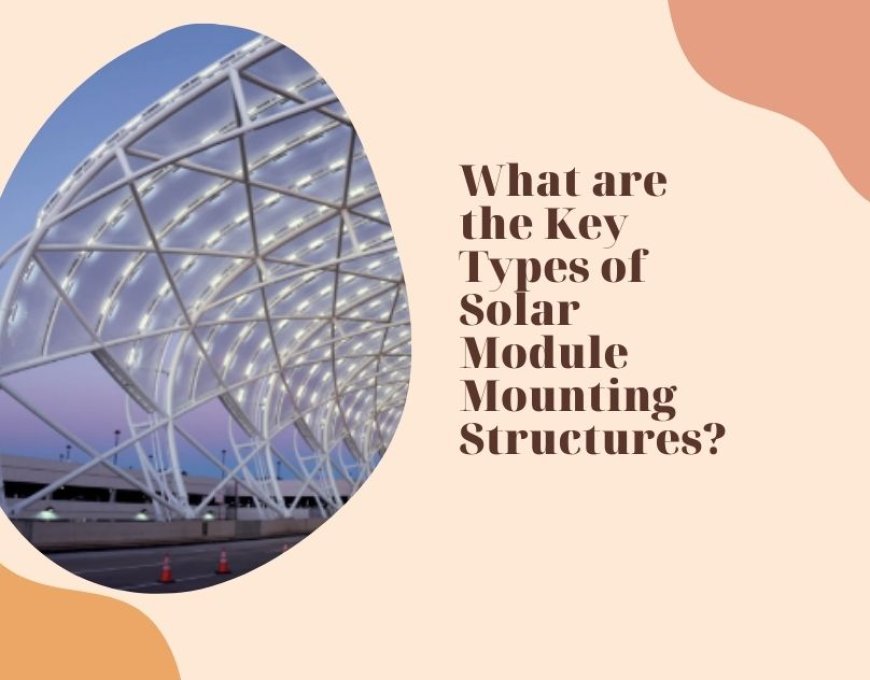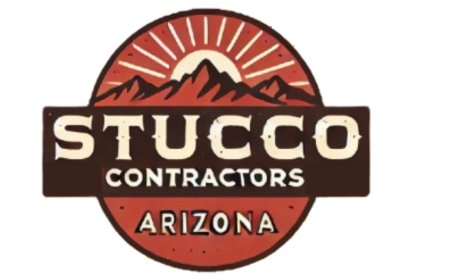What Are the Key Types of Solar Module Mounting Structures?
The infrastructure is being optimized for effectiveness, durability, and ease of installing solar modules; thus, solar module mounting structures are one of the most critical elements in the solar power system.

As the importance of solar energy increases all over the world, so does the foundation behind the production of solar power. The infrastructure is being optimized for effectiveness, durability, and ease of installing solar modules; thus, solar module mounting structures are one of the most critical elements in the solar power system. These structures offer solar panels with a position from which they can collect maximum sunlight and a position under different weather conditions whereby they can be secure for many decades.
There are various types of solar module mounting structures, and understanding their importance in a solar energy project is the subject matter of this blog. Along with it, we shall throw some light on the beams, and how originally used for the safety of roads, the use of these beams has proved to be relevant in the field of solar.
What Are Solar Module Mounting Structures?
A solar module mounting structure is simply a framework that anchors and supports the placement of solar panels on other surfaces to ensure that there is an effective angle to catch maximum sunlight. Such constructions are sturdy enough, and they should be able to withstand the weather because they are usually exposed to outdoor settings.
Mounting structure selection is critical since the performance, efficiency, and lifespan of the solar power system depend upon it. Depending on the installation environment, the roof type and energy goals, there are different categories of solar module mounting structures.
1. Roof-Mounted Solar Structures
The most common type of mounting structure for solar panel systems is on rooftops, especially in residential and commercial buildings. They are ideal for using the available space atop the roofs in urban environments where there is limited space. Roof-mounted solar structures have two basic subtypes:
• Flat Roof Mounting: As the term gives away, these mountings are done on flat-topped roofs using adjustable frames to hold the solar panels at an optimal angle with the roof surface so that there would be maximum sunlight exposure. Actually, with flat roofs, there is no natural slope that will facilitate its tilt, so the design of the mounting system has to be flexible enough to adjust the angle for the desired sun exposure.
• Sloping Roof Mounting: In sloping roof mounting, photovoltaic panels are laid parallel to the roof surface. The angle of the slope greatly influences the amount of sunlight that the panels capture.
Advantages of Roof-Mounted Systems:
• Saves space and is quite cost-effective for homes and buildings.
• It minimizes the usage of land while utilizing the existing roof structure.
• Aesthetics with the building architecture.
2. Ground-Mounted Solar Structures
Ground-mounted solar structures are mounted directly on the ground and are ideal for large projects for solar energy, which include utility-scale installations, farms, and rural areas. This system is more flexible in design as roof sizes do not constrain it.
There exist two primary types of ground-mounted structures.
• Fixed-Tilt Ground Mounts: Solar panels are mounted at a particular angle. This mounting system is less expensive and more straightforward than adjustments, but it does not take the changes in the position of the sun due to seasons into consideration; hence, it may affect the overall energy produced.
• Solar Trackers: Trackers are more sophisticated and active mounting structures that shift the orientation of the solar panels over time during the day to align with the sun's path. It maximizes the amount of sunlight received, thereby increasing the energy yield by up to 25-30% as compared to fixed-tilt systems.
Advantages of Ground-mounted Systems:
• Best suited for massive installations on large spaces and areas where land space is abundant.
• More manageable for maintenance and cleaning operations than rooftop installations.
• Sophisticated tracking technology can be implemented to yield maximum results.
3. Carport Solar Structures
Solar carports are in great demand commercially and domestically, too. This multi-use structure will produce solar power, besides providing shaded parking space for automobiles. Carports are typically found in parking lots, homes, and office buildings.
Benefits of Carport Solar Structures:
• Functional with shadowing and power production.
• It saves a great deal of space, mainly in urban areas where parking lots abound.
• Accessibility to maintenance and cleaning is highly easy.
4. Pole Mount Solar Structures
These are usually for low-capacity or off-grid solar systems. The panels are fixed to one pole that can carry one or more panels. In addition to that, tracking mechanisms may be incorporated into the system to allow it to trace the sun from east to west as it traverses the sky during the day.
Advantages of Pole Mount Systems
• Suitable for smaller off-grid solar systems and regions with minimal space.
• Ideal installation, which can be done with ease in different angles within the panels
• It elevates the panels above the ground with the panes out of the reach of detrimental wildlife or flooding.
5. Floating Solar Mounting Systems
The floating solar installation is relatively new, but it is becoming more popular as an alternative, especially in those regions where space availability is limited. In such installations, the solar panels are mounted on floating platforms placed on lakes, dams, or reservoirs.
Advantages of Floating Solar Mounting Systems:
• Utilize the unused water surface, saving valuable land.
• Reduce water evaporation and can improve the efficiency of panels as it keeps them in a cooled state due to the water.
• A new solution for densely populated regions where land is very scarce.
How Do Thrie Beams Relate to Solar Module Mounting Structures?
Thrie beams were used for road safety barriers but are now also increasingly found in solar energy projects. The term 'Thrie' was named after its shape, which is a three-wave one, and it is mostly used in guardrails meant to absorb the impact of a colliding vehicle. Being sturdy and durable, they are ideal for use in very challenging outdoor environments that are in line with the demands of solar projects.
Solar mounting systems may employ a three-beam support structure, thus stably holding ground-mounted panels. The durability of the beams helps installations in the solar systems withstand strong winds and even storms and other extreme weather conditions. The Thrie beams are characterized by high resistance to corrosion; hence, their application in solar projects that seek minimal maintenance in the long term is effective.
Conclusion
The mounting structure for the solar modules needs to be appropriate to ensure efficient capture of solar energy and the long-term performance of the system. The choice depends on the scale and nature of the project, as well as the area and energy requirements. The mounting structures could be roof-mounted, ground-mounted, carport or pole-mounted, and floating ones.
Besides this, the addition of the beams in solar power installations provides a new facet in terms of structural support; that is to say, the solar projects will remain stable and efficient even in challenging environments. The outcome will be more innovative and robust solar energy solutions as the technology advances. These different mounting structures and innovation such as thrie beam make the solar future bright, efficient, and more sustainable.
What's Your Reaction?





























